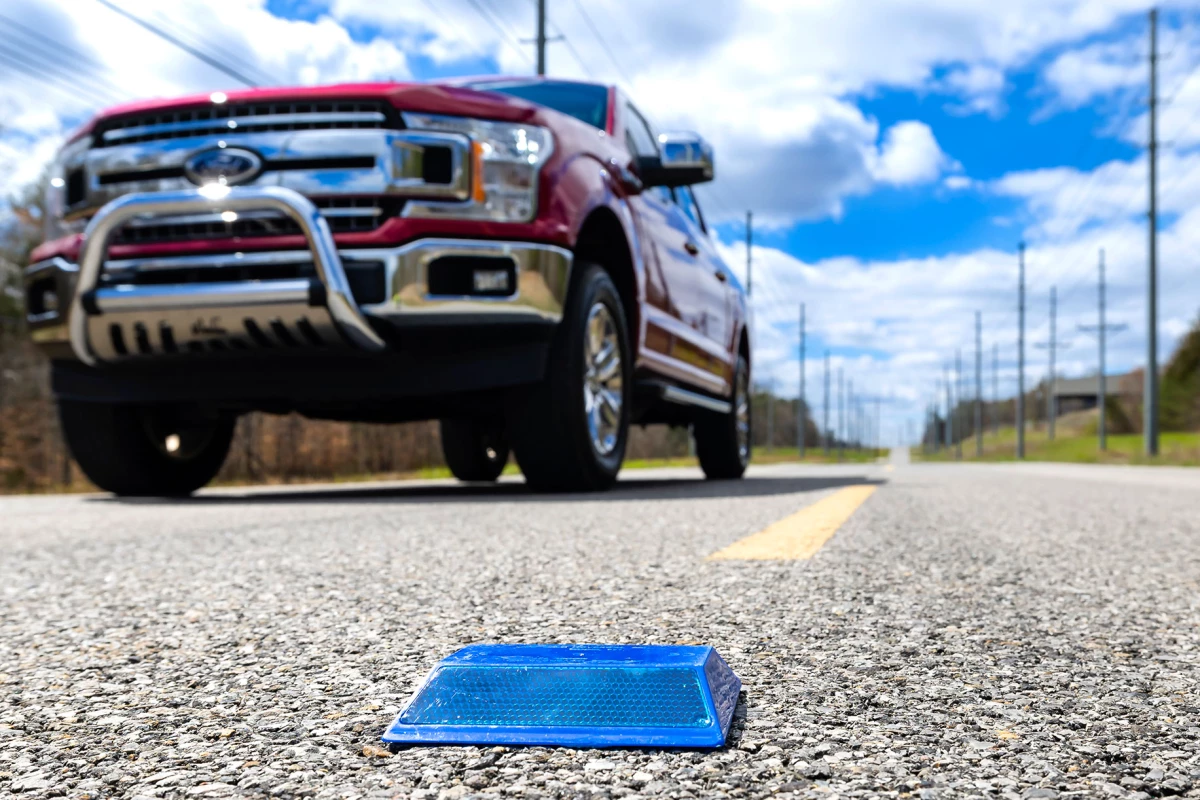When a road is covered in snow or obscured by fog, the navigation systems of self-driving cars may have trouble seeing where that road is. Specially equipped pavement markers could soon help, by continuously transmitting radio signals to passing vehicles.
Currently being developed by scientists from the US Department of Energy's Oak Ridge National Laboratory (ORNL) and Western Michigan University (WMU), the technology incorporates raised reflective markers of the type that are already in use on many highways.
Packed inside of each unit is a microchip, radio transceiver, battery and antenna. Fifty times per second, the markers transmit data that includes their GPS coordinates.
By continuously analyzing that data, algorithms running on both the markers' chips and the car's software are jointly able to determine where the road surface is and where it's heading – even if it's hidden from the vehicle's view.
In field tests conducted in a national park in Montana, the markers were found to transmit their signals over five times farther than the initial 100-m (328-ft) goal. It is estimated that the batteries would need to be replaced about once a year.
Importantly, unlike other road-tracking systems that are entirely contained within the car, this one lightens the processing load by being partly incorporated into the road itself. According to the scientists, use of the markers should thus reduce a car's navigational power consumption by up to 90% as compared to a leading traditional camera- and LiDAR-based system. This reduction in power usage should in turn boost the car's battery range.
Down the road (no pun intended), the technology could conceivably also be utilized to convey information such as lane closures, traffic volume, temperature and humidity.
"We are working to make autonomous driving features accurate and safe in more remote areas," said ORNL's Ali Ekti, who is leading the research along with WMU's Sachin Sharma. "And we are doing it by converting a dummy piece of infrastructure into something with many more uses."
A paper on the study was recently published in the journal SAE Mobilus.
Source: Oak Ridge National Laboratory




